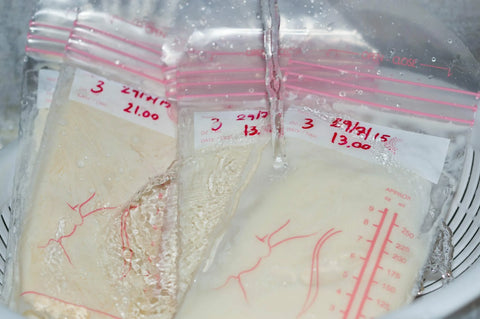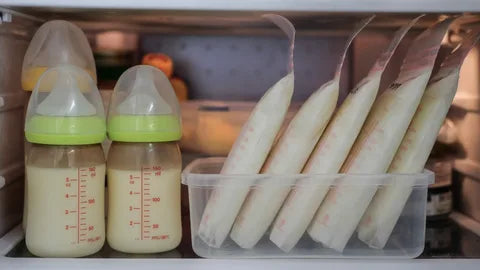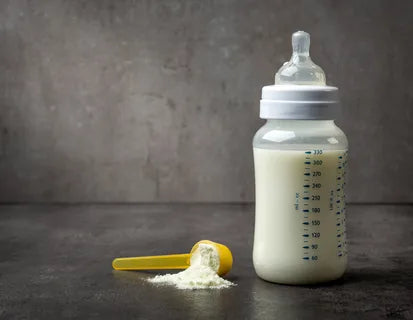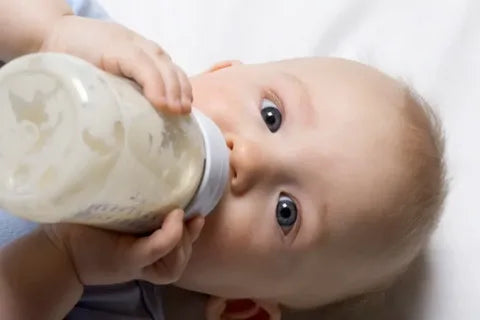You can decide whether to warm breast milk that has been kept before giving it to your baby. Since breast milk is warm when newborns nurse, many babies prefer it when they drink it from a bottle. Baby cordless bottle warmer helps warm baby milk anywhere and makes travelling with your baby a snap. Portable & tiny to fit in the car or baby bag. The USB interface on the portable baby bottle warmer allows you to recharge it anywhere, and the built-in high-capacity battery gives it a long energy life of 6 to 8 hours.
Warming breast milk improves its consistency after storage. The fat in breast milk tends to separate in the bottle when it is frozen or chilled. Breast milk can be mixed back to its normal consistency more quickly and readily if you warm it up or, at the very least, bring it to room temperature. Please continue reading to the end as we will address some often-asked issues about warming and thawing breast milk.

How long is breast milk good for after thawing?
When your infant wants to feed, you may not always be around. When this happens, you could be returning to work or school, needing to do errands, or wanting to go out with friends. By providing your baby's caregiver with breast milk to feed your child, storing breast milk makes this separation smoother. Your kid will continue to benefit from breast milk while you are away.
Breast milk may be used immediately after storage or frozen for later use. In any case, there are certain considerations to make to ensure your baby's milk is safe. Depending on whether you're preserving fresh breast milk or thawing frozen breast milk, these recommendations alter.
Thawed breast milk can be in the freezer for a year when it is properly stored according to the guidelines; in our previous articles, we have written the guideline on how breast milk should be frozen. Research shows that breast milk thawed after a year in the freezer lost its original taste, nutrients and also eventually had another smell.

How long is breast milk good for in the fridge?
Warm or thawed breast milk can be left out at room temperature for a short while without harm. At 77 degrees or lower, it can be kept out for up to two hours.
If you have any breast milk left over, you need to be aware of this. For instance, if your child didn't complete the entire bottle during a feeding, you can occasionally have milk left over. Breast milk from an earlier feeding can be stored for subsequent use, but it must be consumed within two hours.
Breast milk storage recommendations for warmed milk will help to reduce the possibility of bacterial growth. Warm milk that has been left out provides the ideal warm, nutrient-rich habitat for the growth of bacteria.
Because young children's immune systems aren't developed enough to defend them against bacterial illness, it's crucial to prevent bacterial development by not letting milk sit out for longer than two hours.

How long is breast milk good for at room temp?
Milk that has been freshly extracted or pumped may be kept in the following: At or below 77 degrees Fahrenheit (room temperature) for up to four hours. Within the refrigerator for up to a period of four days. In the freezer for around six months is ideal, although keeping it there for up to a year is fine.
How long does breast milk last in the refrigerator?
To avoid wasting milk that might not be consumed, save modest volumes of breast milk while freezing it. Keep in containers that hold 2 to 4 ounces or the serving size.
Breast milk expands as it freezes, so it leaves approximately an inch of space at the top of the container.
The recommended practice is to cool freshly expressed milk as soon as possible. Freshly expressed milk can stay at room temperature (up to 77°F or 25°C) for 4 hours (or up to 6 to 8 hours if very cleanly expressed).
Breast milk can be kept at the back of the refrigerator at a temperature of 4°C or 39°F. Although it can be stored in the refrigerator for up to 8 days, it is better to use chilled breast milk within four days.

How long does breast milk last after warming?
There are lots of questions regarding breast milk. How long my breast milk lasts after warming is one specific query. This article will offer some useful advice on how to maintain your baby's food safe for consumption, as well as some assistance in answering this issue.
Term newborns are the major target audience for this material. With premature neonates, it is advisable to exercise even greater caution. Always discuss your unique situation and the best approach to storing and using unused milk with a lactation consultant.
After extensive investigation and expert medical advice, the decision was taken that breast milk should only remain warm for two hours.
According to the findings of the experience study and the Academy of Breastfeeding Medicine's general recommendations, the effective life cycle of pumped or expressed breast milk is invariably mapped at two hours after warming. This 2-hour expiration period results from the scientific discovery that many bacteria thrive best in warm environments.
Milk can be kept cold when travelling by using an insulated cooler or by using ice packs. The breastmilk, which is to be stored in a human milk storage container, should have ice packs applied to it. To stop gas from escaping and spoiling of freshly extracted milk, the insulated cooler should be firmly shut. The previously frozen breast milk must be used within 24 hours of thawing; however, once warmed, it must be used within 2 hours.
Breastmilk should be discarded and carefully cleansed with soap and water if it exhibits indications of deterioration. The equipment used for pumping and storing breastmilk, including the bottle and storage bag, should be carefully observed.
Some nursing mothers may become nostalgic when it comes to throwing out leftover breast milk that has been hanging out longer than the recommended time, especially after the arduous process of pumping and storing breastmilk.










